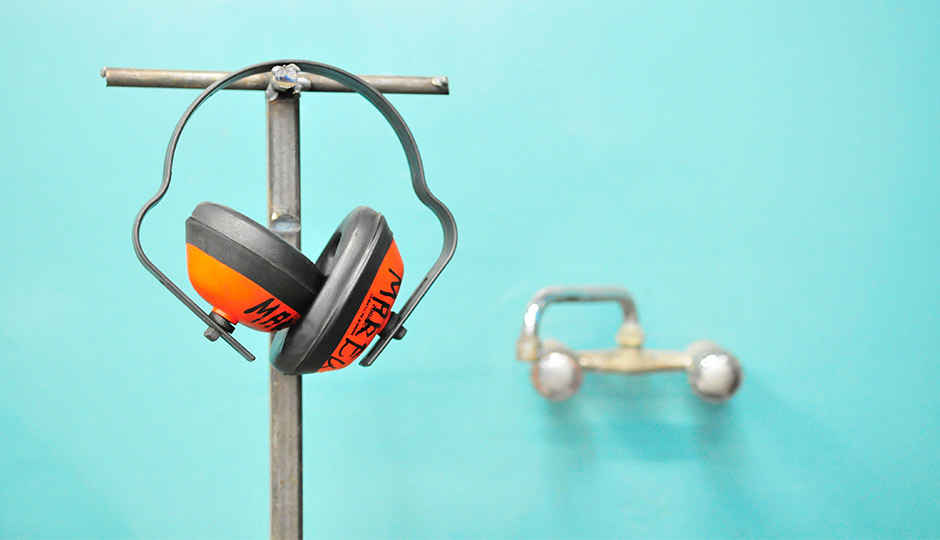
Everyone out there probably listens to music when they are sitting idle or commuting to work. The ones who are passionate about it will spend a lot of time hunting down the right pair of headphones. This search isn’t easy because one has to consider a long list of preferences they might have picked up through years of trying out different headphones. You might prefer over-the-ear headphones because of the superior comfort but someone else would want the portability of an IEM. Your buying choice also depends on where you intend to use them and what kind of music you like. We’ll be going through all the basic aspects you should consider when you’re buying any type of headphones for yourself – or for someone else.
What to consider
Type of headphone
Headphones have different categories catering to your preferences and budget. It starts off with earbuds that fall into the cheapest segment. They usually have poor sound quality and noise isolation as well but are incredibly cheap. Next, you have IEMs or in-ear monitors that sit inside your ear cavity to deliver superior sound and noise isolation. They are available from a budget segment to even the audiophile category. IEMs offer an incredibly snug fit and sometimes, they also come with different interchangeable bud sizes. You will also find custom earbuds that are made according to the shape of your ear cavity. However, those are way too expensive. If you’re a gym or sports enthusiast, you can check out dedicated IEMs that are sweat resistant and even waterproof for swimmers. Now, we come to over-the-ear and on-the-ear headphones. Some users would prefer these kinds of headphones since they don’t stick into your ears. Over-the-ear headphones are also called circumaural which means the earpads covers your ears. On-the-ear headphones are also called supra-aural and they stay on your ears. It boils down to which of the two you prefer. Both these types are also available in closed and open back options. Closed back headphones will offer you a narrow soundstage and isolate the sound better without letting others know what you’re listening. Unless the closed back earphone suffers from leakage. They are a popular choice if you intend to use them when you’re travelling or while sitting around people. Open back headphones have a wide soundstage and since the earcups are open, people around you will be able to hear what you’re listening to. They deliver incredible audio performance and you should only go for them if you’re going to use them in a closed room without disturbing anyone else.

Impedance
When you’re buying headphones, you need to look at the impedance, based on where you’re going to use it. We won’t go into much detail into explaining impedance. All you need to know is that low impedance headphones will be able to work with low power devices like portable music players and smartphones. For example, headphones with an impedance of 16 ohms or 32 ohms can be driven by most of the high-end and even mid-tier smartphones. However, if you’re connecting a headphone with an impedance of 300 ohms, your smartphone won’t be able to drive it and you’ll require an external amp. Low impedance headphones can be used on powerful equipment but there are chances that the drivers might blow out. Conclusively, if you want to use your headphones with your smartphone, you should go for a low impedance headphone. If you’re using your headphone with sound mixers, you should look for high impedance headphones.
Budget
You’ll find an endless number of choices when you’re buying headphones, even at different budget ranges. And you will realise that every budget will have a set of great sounding headphones. Hence, you have to decide how much you want to spend on them. Picking your budget for headphones is important because you might want to add extra accessories to them later. You might want to buy an amp or a DAC, or both which will cost you an extra sum of money. Later, you may even think of improving the filters or maybe replace the earpads with something of your choice. The best way would be to plan how much you are willing to spend overall on your listening equipment and then accordingly assign the budget for your headphone.
Music
Although your best bet would be on a headphone with a flat sound signature, you might have preferences for the kind of music you listen to. When the sound signature is flat, you might not enjoy your favourite music on them. Say, you’re into rock or jazz. You’d want the highs or the treble to be boosted to an extent where the instruments stand out. Similarly, if you prefer EDM or dance music, then you would prefer the lows or the bass enhanced. Hence, it’s completely based on personal preferences and the only way to find out is to listen to these headphones or verify their performance from reliable sources. Usage: The way you use your headphone is going to highly affect your buying decision. If you’re looking for a headphone for your daily commute, you’d want something portable that fits inside a bag or in your pocket. If you want to play games, then you would want a headphone with superior comfort and a microphone. You might even want wireless connectivity if you don’t want to deal with cables. There are options for every use-case and you can even score headphones that offer a middle-ground in some scenarios.
Earpads
Comfort is a priority if you intend on using your headphones for long sessions. The earpads are given different kinds of coating which should be given a lot of thought before buying. You’ll find leather, fabric, or just a plain rubber lining over the cushion. Whatever feels better over your skin, go for it. The cushions are usually made of foam while some headphones on the higher end are made with memory foam. The latter is slightly better since it will last you longer.

What not to consider
Active noise cancellation
Most of the headphones out there will offer some form of passive noise cancellation or isolation. This is done through the earpads where over-the-ear headphones are able to deliver better isolation. Active noise cancellation is something you should consider only if you really need it and not treat it as an additional feature in the headphone. You won’t be able to block out people chattering around and only prevent noise from jet engines or air-conditioners. They are also expensive and with the extra hardware installed to implement it, the overall sound quality is slightly compromised. So, if you’re one of those people who travel a lot in planes or spend most of their time at noisy locations, go for it if the noise bothers you.
Wider frequency response
The human ear is capable of hearing sounds between 20-20,000 Hz. You’ll find headphones specifying that they can reproduce sounds up to 23,000 Hz and down to 15 Hz. Some would say that this gives the sound more room to play around and offer better sound quality. However, that’s almost negligible to the untrained ear and you won’t be able to listen to the sounds in those ranges at all.
Source:-digit







